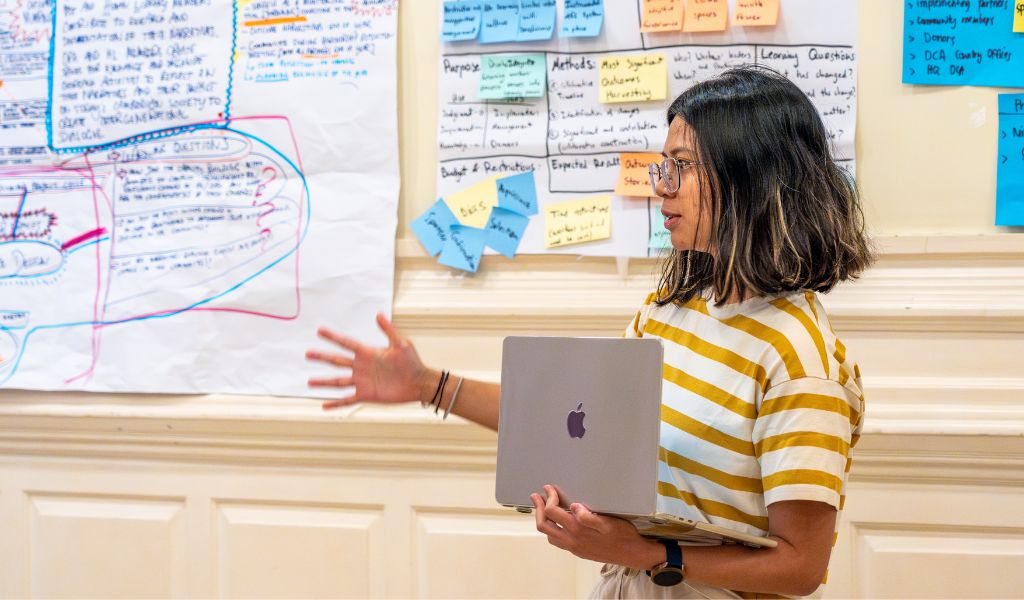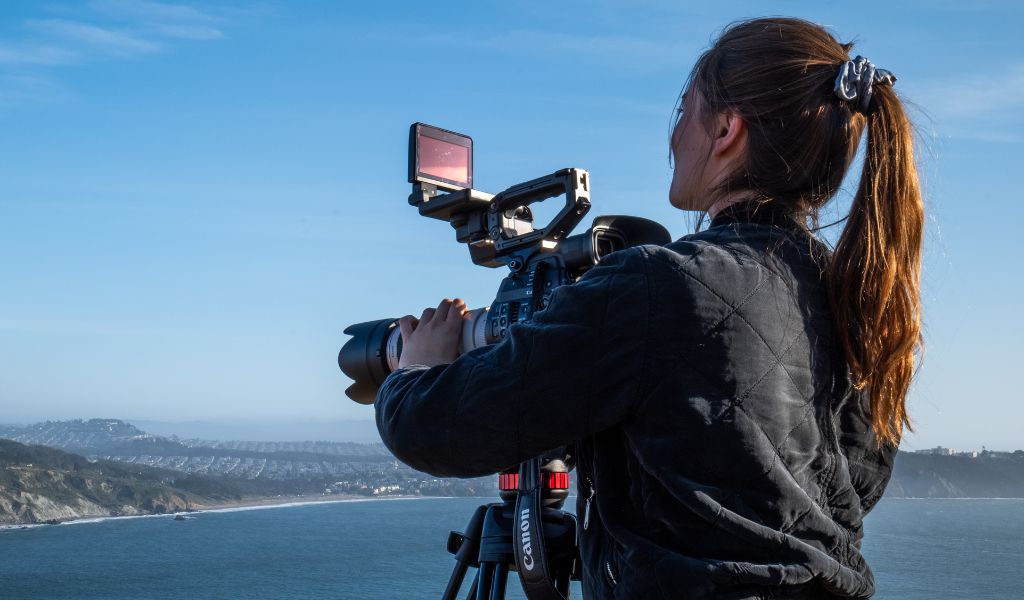As a filmmaker and researcher working at the intersection of advocacy, community storytelling, and policy, I joined the IDS short course in Participatory Monitoring & Evaluation (M&E) for Learning to refine my skills in this area.
Much of my work involves co-creating with communities, asylum seekers, and individuals navigating trauma and marginalisation. I wanted to ensure I was not only gathering stories responsibly but also developing frameworks to assess and reflect on the impact of these collaborations in a way that centres participant agency and voice. The IDS course offered a one-of-a-kind opportunity to deepen my practice, learn from global peers, and explore models that go beyond extractive or top-down approaches. It was an honour to work with IDS and two organisations that do just that: Voices That Count and ADIC (the Analyzing Development Issues Centre) who co-delivered this course.

Using participatory approaches
Prior to the course, I would incorporate participatory approaches into both research and nonprofit consulting work—often using creative tools such as participatory photography, storytelling workshops, and film-based focus groups. For example, while working on a documentary project with Afghan refugee youth, I facilitated co-creative processes where participants were invited to shape the narrative, conduct interviews, and reflect on their own stories. Similarly, in my role with the non-profit Connected Horse, I helped evaluate equine-assisted programmes using qualitative interviews and feedback loops that involved care partners and people living with dementia. However, while I had hands-on experience, I lacked a formal foundation in M&E theory and wanted to ensure that my methods were ethical, inclusive, and effective at driving learning and programme improvement.

Working with complexity and understanding power dynamics
One recurring challenge I faced before this course was reconciling the flexible, often unpredictable nature of participatory creative work with the more linear expectations of traditional M&E systems. Many of the communities I work with face precarity, migration, or trauma, so building trust takes time, and outcomes are not always quantifiable. I also struggled with how to present findings in ways that were useful to funders or institutions without diluting the complexity or context of participants’ lived experiences.
There was also the ongoing question of power—how to avoid reinforcing extractive dynamics, and instead foster evaluation as a shared and empowering process. Connecting with other professionals on this course and learning about how they navigate similar challenges proved invaluable.
Taking a participatory approach to M&E
Participatory M&E shifts power dynamics and allows the communities most impacted by programmes, research, or interventions to take a leading role in assessing and describing their impacts. It recognises that people are not just “beneficiaries” but co-creators of knowledge and meaning. For work to be relevant and transformative, especially in contexts of displacement, injustice, or healing, it is critical that it reflects the voices of those directly involved. Participatory approaches allow for more nuanced insights, deeper trust, and ultimately, more sustainable change. Moreover, they open up space for unexpected learning and lead to enduring relationships.
Applying the learning
The course helped me become more intentional in building M&E into projects from the start—rather than as an afterthought—and in doing so with participants as active collaborators. Since taking this course, I have strived for clearer communication, starting with collaboratively defined indicators of success. I have also experimented with tools like outcome mapping and storytelling analysis that respect complexity while offering structure. In particular, I’ve refined the way I design visual storytelling workshops, incorporating feedback moments that are themselves participatory and reflective. I also now approach reporting with a more learning-oriented mindset, using evaluation not just for accountability but as a vehicle for adaptation and dialogue.
I was surprised by how flexible participatory M&E can be when it’s grounded in strong principles, and especially by the impact that some simple tools and exercises can really have when brought into communities. I had expected to encounter more rigid frameworks but instead found a rich toolkit of methods that can be adapted to different cultural, political, and artistic contexts. It was deeply refreshing to learn from practitioners around the world who are doing community-centered work, many of whom face similar challenges and are approaching them with thoughtfulness and care.
Expanding my network
The main takeaways from this course are the professional relationships that I built. Meeting professionals from around the world and discussing our shared challenges and strategies gave me new tools and commitment to the work of participatory M&E. M&E can be a generative, co-owned process that strengthens relationships, deepens impact, and creates space for reflection and growth. It helps ensure that the projects we design, whether films, workshops, or interventions, are actually responsive to people’s needs and lived realities. That alignment is essential to ethical, lasting change.

